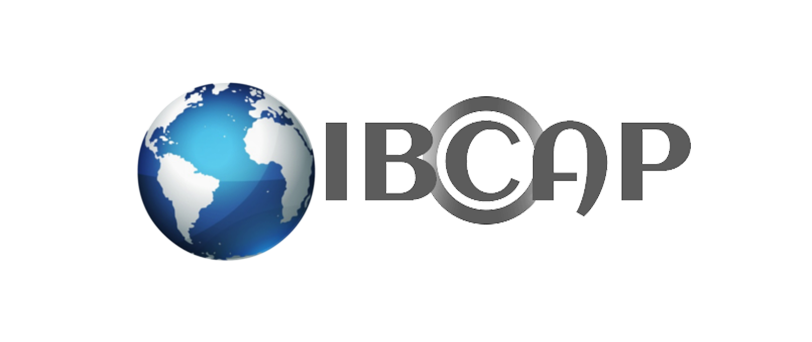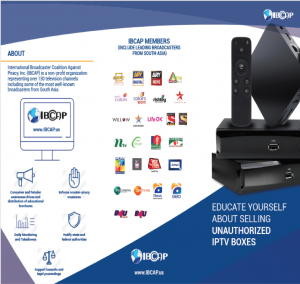
While piracy detection and anti-piracy technology help video distributors protect and preserve revenue, the other consideration is to protect rights, where a parallel set of non-technical avenues is equally valuable.
In the media and entertainment space, a variety of anti-piracy associations and copyright advocacy organizations provide forums for discussion, consensus and action for broadcasters, content owners, rights-holders and their distributors; so they can speak with a common voice to engage with partners, law enforcement and lawmakers.
Protecting international TV programming in the US
One such organization is IBCAP, the International Broadcaster Coalition Against Piracy, a US-based organization that represents the interests of TV programmers from Europe, Brazil, the Middle East and South Asia that serve consumers in the United States.
“Our focus is to cut off pirates from the supply side,” said Chris Kuelling, IBCAP’s Founder and Executive Director. IBCAP has technology partnerships with Nagra and other companies, but the legal system is also a critical weapon in IBCAP’s arsenal.

“IBCAP starts by identifying retailers that are suspected of selling illicit streaming devices and services to consumers,” he said. “Once the seller is confirmed, the next step is to issue cease and desist letters to the suspected parties, suggesting that infringing devices can result in legal action.“
If legal action is deemed necessary, IBCAP’s goal is not necessarily to help secure monetary judgments, but rather, to win injunctions against pirates and retailers; and then to aggressively enforce that injunction against retailers and hosting providers with a physical presence in the U.S. This approach has had a high rate of success. To help orchestrate responses, IBCAP also works with the FCC, law enforcement, and state attorneys general.
Recent successes
During the first quarter of 2021 alone, IBCAP investigators visited nearly 200 retailers in five states that were suspected of distributing infringing devices or services. Those which are determined to be selling a pirate service are targeted to stop. IBCAP’s approach produces results. Out of about 43 retailers investigated in 2017, 41 were selling pirate services. By 2021, only seven were found to be selling illegal services.
As more pirate have been shut down at retail, there has been a corresponding increase in the sale of illegal streaming devices and service subscriptions through other distribution channels, including large online retail portals like Amazon and eBay, and social media sites like Facebook, Twitter and Instagram. Increased emphasis by IBCAP against pirates using social and Web retail channels has resulted in the removal of hundreds of listings.
IBCAP is also pursuing initiatives against pirates who use dedicated apps running on mobile and streaming devices to reach consumers, and has identified, and also has targeted hosting and access providers that remain willing to provide avenues to access stolen content.
The power of partnerships
Partnerships such as those between IBCAP and its members have been a recurring theme with similar organizations around the world.
In the UK, there’s the Federation Against Content Theft (FACT), and in Southeast Asia, the Asia Video Industry Association (AVIA) and its Coalition Against Piracy (CAP). Similar advocacy organizations exist for individual countries and across multiple countries in Europe, Latin America, Asia and elsewhere. Members of these organizations include pay TV operators, TV programmers, large media companies, and technology providers.
Then there are organizations with a mission to educate consumers. Those of us allied with the North American pay TV industry know CTAM and may be familiar with the Stream Safely consumer antipiracy initiative. Creative Content Australia, is a force for good in that country.
Copyright advocacy groups like CreativeFuture has the backs of creative professionals, while The Copyright Alliance works to influence regulators.
In turn, these organizations work with studio and media industry advocates like the Media and Entertainment Services Alliance (MESA), the Motion Picture Association (MPA) and the Alliance for Creativity and Entertainment (ACE); not to mention collaboration with law enforcement, government agencies and lawmakers.
‘The bottom line’ is only one part of the bottom line
While the cost of technology is often the first consideration for many media distributors, the time invested in building relationships is just as valuable.
While technical solutions mandated by content owners and rights-holders may take years to make their way through a distributor’s justification and budget approval process, not to mention acquisition, implementation and deployment, the partnership route will often produce results more quickly.












